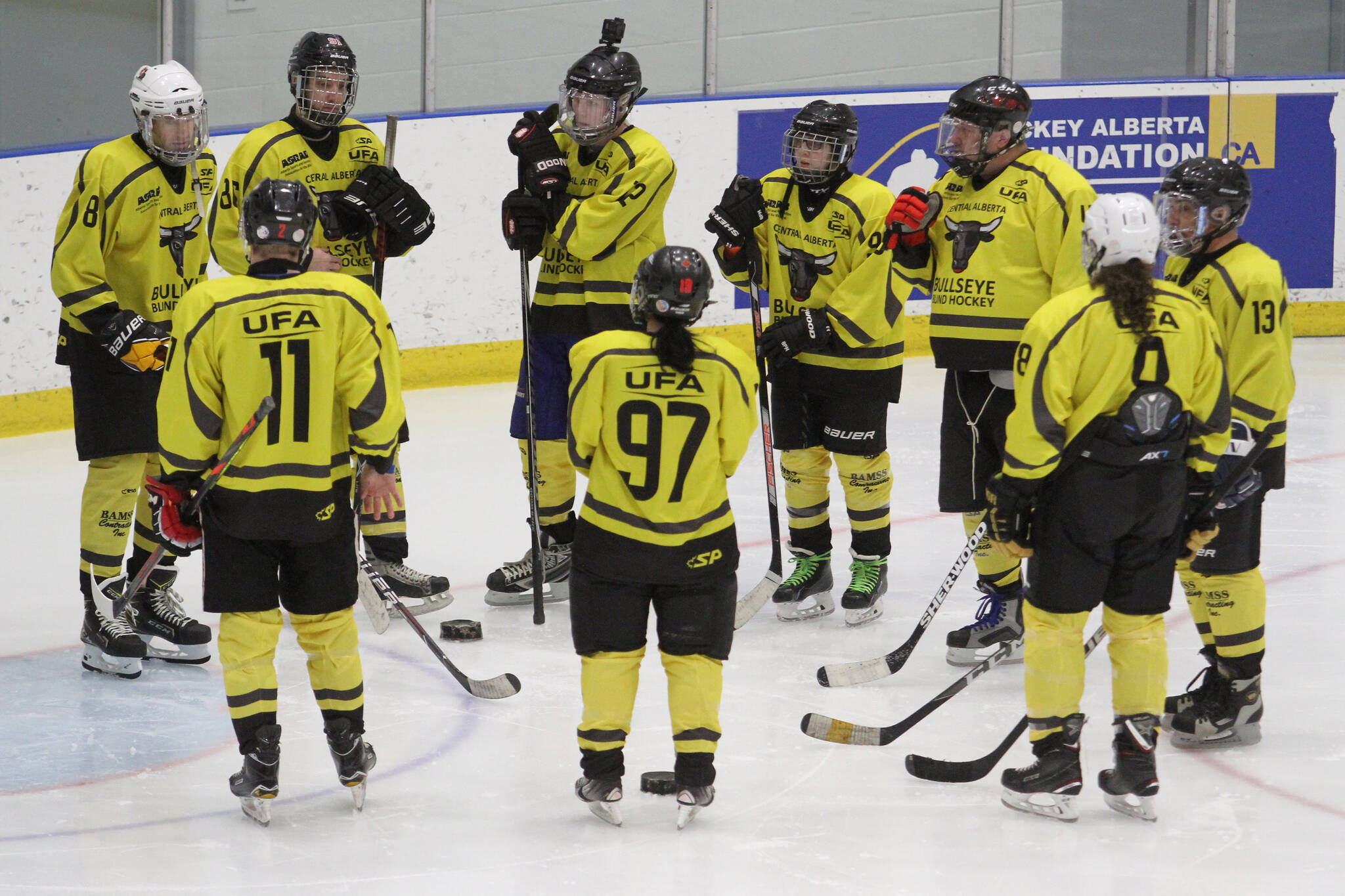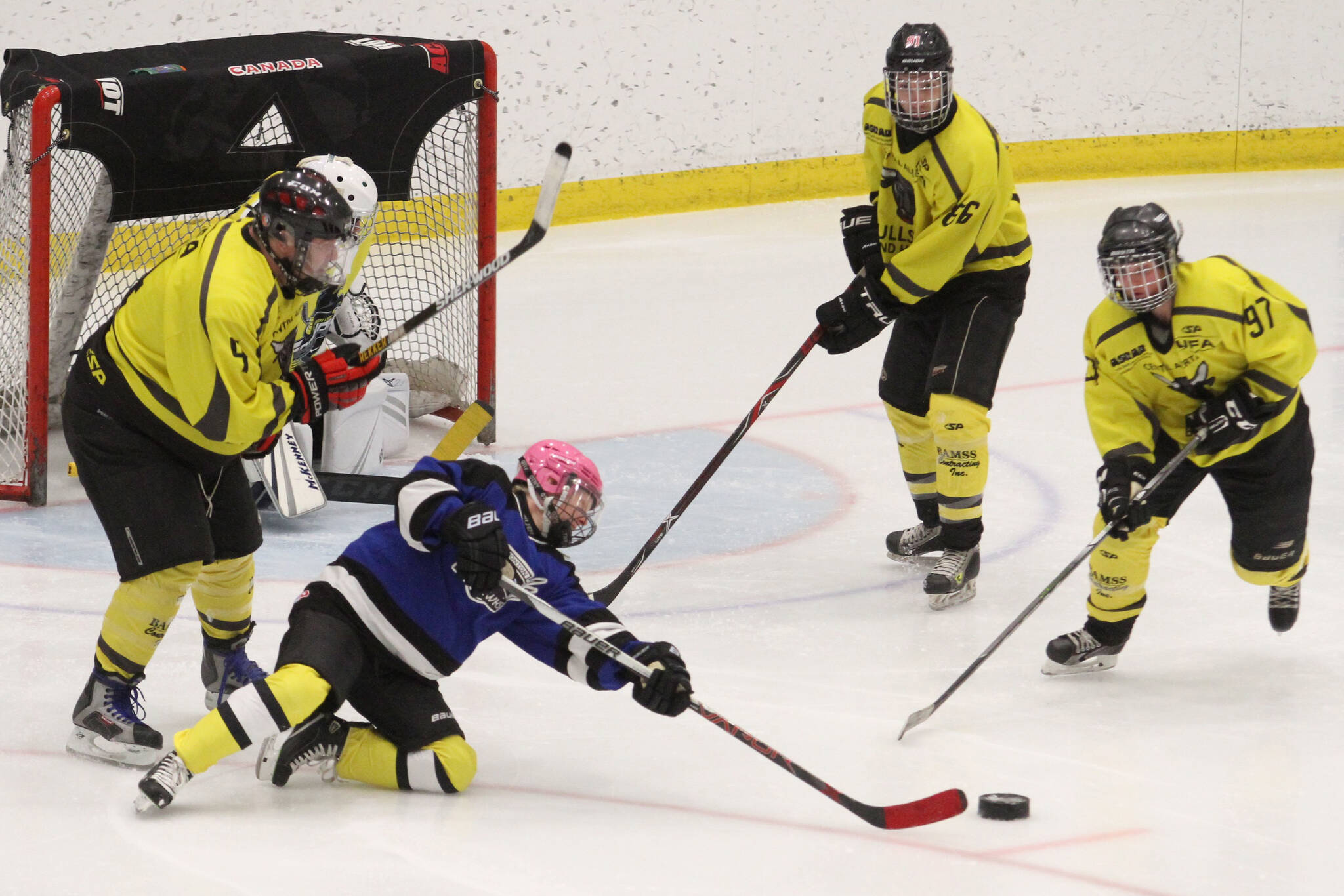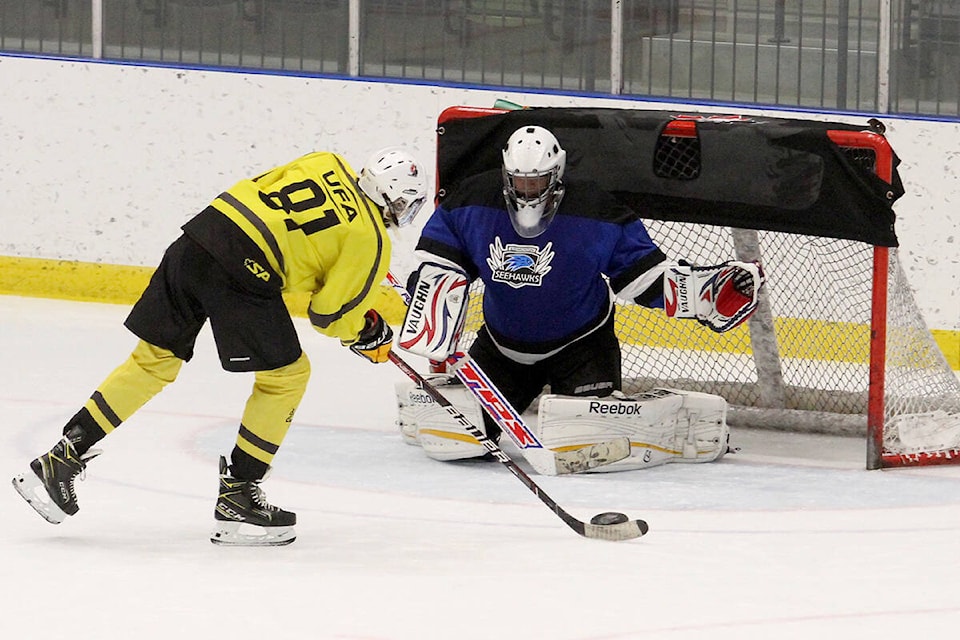Discovering blind hockey about five years ago was a revelation for Dustin Butterfield.
“I have centre vision, but I have a lot of peripheral vision loss,” explained Butterfiled, who was born with Choroideremia, which is a condition characterized by progressive vision loss.
The Lacombe man grew up playing ice hockey, but is unable to play traditional competitive ice hockey now due to his impaired vision.
“After 2009, eight years went by when I never put my gear on,” he said.
“There would’ve been times I went out with friends and just had a good time on the ice, but I never would’ve played beer-league hockey because I would’ve felt like I couldn’t track the puck enough to be comfortable.”
While at a fundraising event in 2017, Butterfield was introduced to blind hockey by a couple of players for the Edmonton SeeHawks.
“Later, when a (blind hockey) event came up in Alberta in early 2017, I went out and tried it,” he said.
“Beforehand I thought, ‘Maybe I’ll have a little too much vision for this.’
“I loved it after that event, then from there I went to a tournament in Alberta in 2017. By the end of that tournament I was hooked. It’s all about the love for the game of hockey, the competitiveness and to be among your teammates. It’s a lot of fun.”
On Saturday, the SeeHawks came to the Gary W. Harris Canada Games Centre in Red Deer to play the Central Alberta Bullseye, a team Butterfield started in 2019.
The Bullseye defeated the SeeHawks 5-4 in Saturday’s Alberta Blind Hockey Challenge, which was the players’ first game in a long time due to the COVID-19 pandemic, Butterfield noted.
“This feels like it’s the first competitive game we’ve had in two years, with refs and everything,” he said.
“It was so good to be out there and playing again. It’s a pretty tight-knit community. Even though we’re out there competing against them … we’re kind of friends with everybody.”
Since the Bullseye was created, it has continued to grow, Butterfield said, adding a few people have expressed interest in trying blind hockey.
“If I can get those people out to a practice, where there’s not a lot of pressure on, they can discover skating again and the adaptive puck, which is quite large and makes a lot of noise,” he said.
“As soon as they practise a couple of times, they’ll be confident in their skating and shooting.”
The Bullseye has a few more practices left this season. In March, “quite a few” Albertans plan to head to the Canadian National Blind Hockey Tournament in Toronto.
“It’ll be well attended I think, because there hasn’t been a single Canadian Blind Hockey event since a tournament in Ottawa in November 2019. It’s been quite a bit of time,” he said.
“In the future we hope the pandemic doesn’t become a limiting factor for anybody. We just want to keep playing. Even if we only have 10 or 12 ice times in a year, it’s great to see people and practice.”
sean.mcintosh@reddeeradvocate.com
Like us on Facebook and follow us on Twitter


